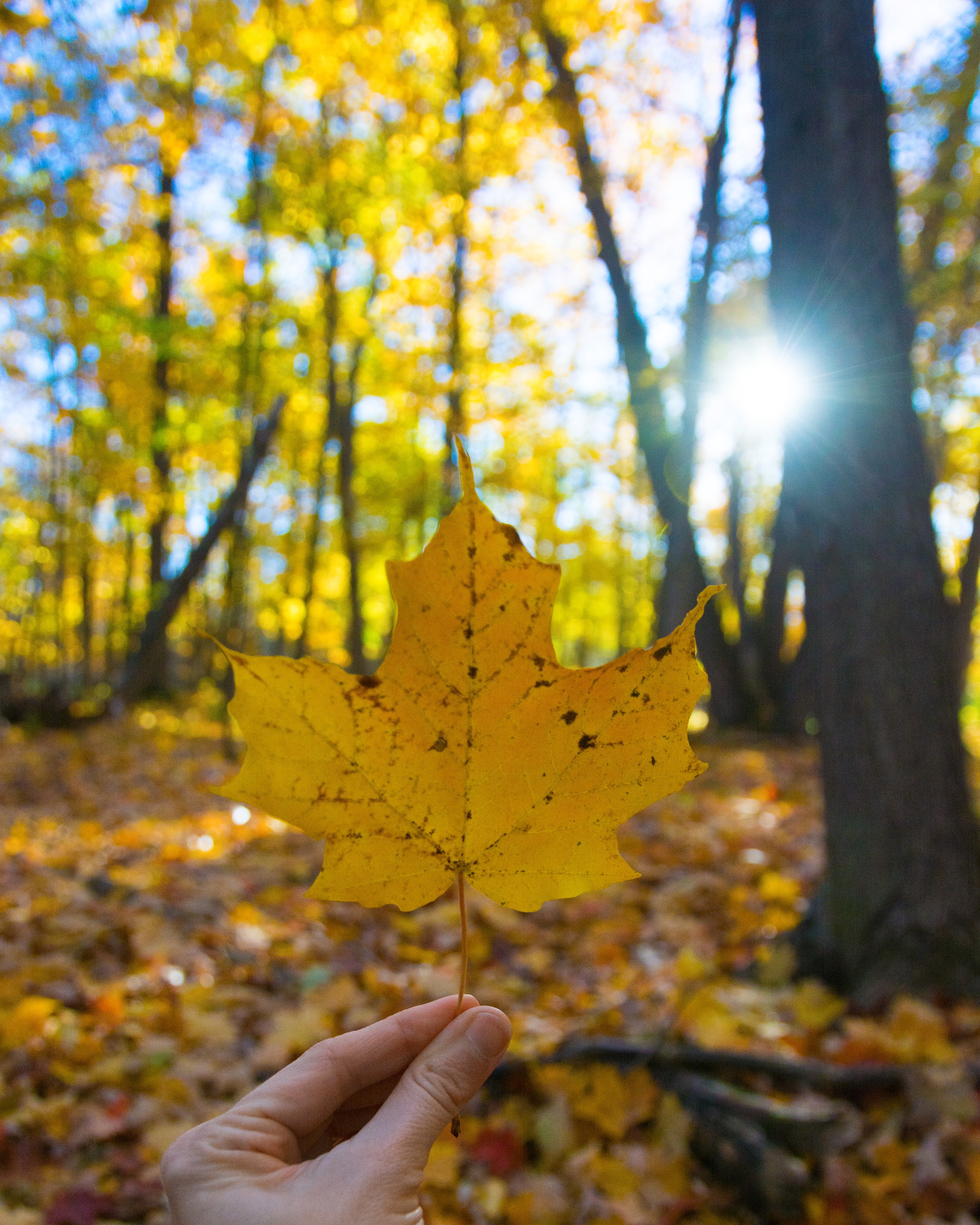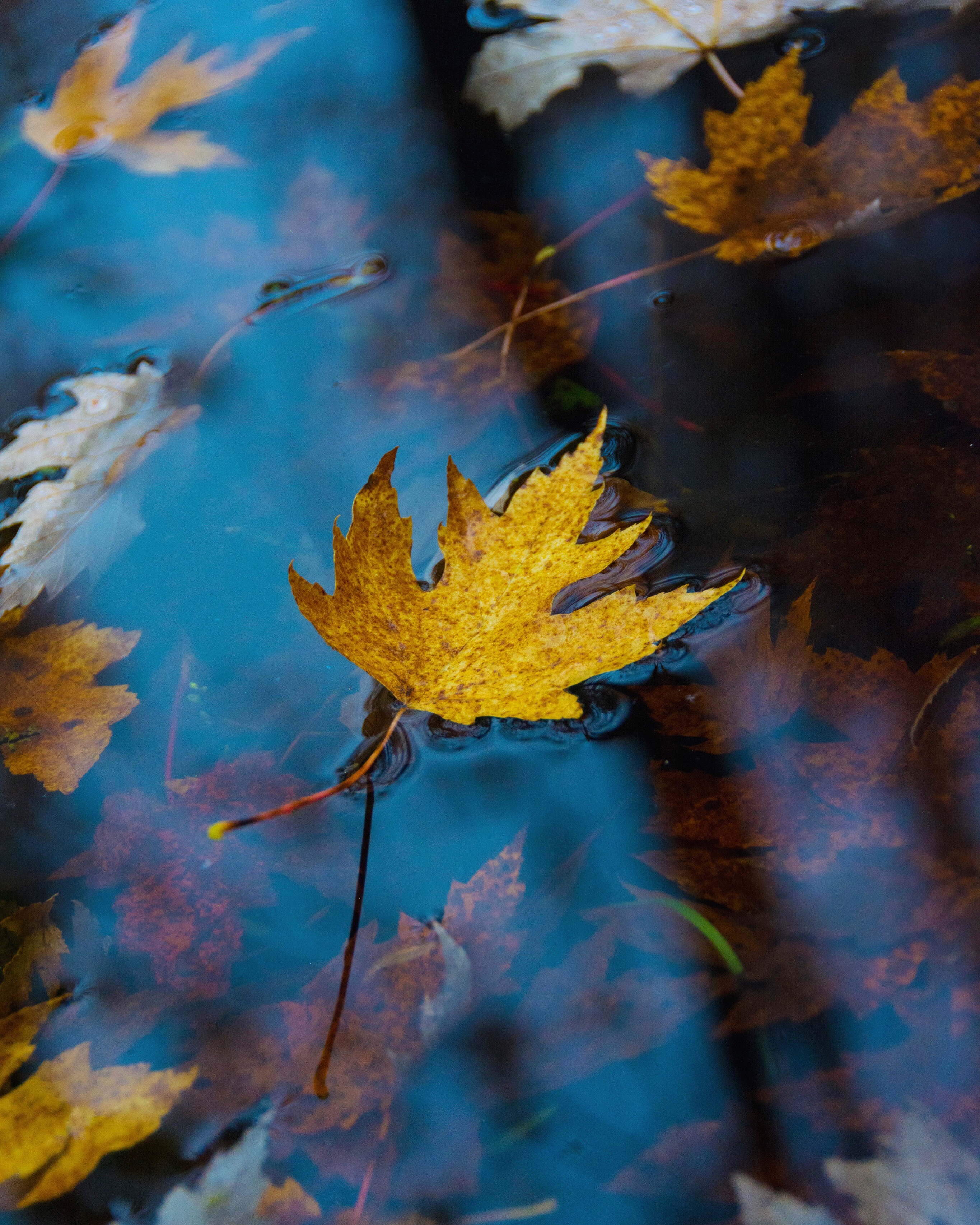Interview with George Osowski
Did you know that humans can eat several parts of the maple tree? We usually associate maple trees with sweet maple syrup but we can also eat the leaves, bark, and seeds! George Osowski from the Atlantic Wildlife Institute was on CBC Radio discussing the edible qualities of maple trees (here). I was surprised to learn how much of this tree can actually be eaten!
The Edible Parts of Maple Trees
- The young spring leaves of maple are edible. You can eat them raw or cooked. Osowski says that they have a slight maple flavour to them that can differ from tree to tree.
- You know those little ‘helicopters’? They are called samara fruit. You can peel away the outside layer and eat the tiny seeds inside either raw or roasted. Soaking them in water first will take away some of the bitter taste. Osowski recommends roasting them with a little salt and oil.
- The cambium layer of the bark is also edible. You can pound it into flour and cook with it. The Haudenosaunee (Iroquois) and Algonquin peoples used the bark to make bread and as a soup thickener. According to Robbie Anderman, they also used the inner bark to make a tea for treating coughs, menstrual cramps, and measles.
- Maple sap can be gathered from all types of maple trees, but the best is the sugar maple. Maple syrup contains several important minerals like manganese, zinc, calcium, potassium, iron, and magnesium.
Food for Animals
The maple tree is also an important diet staple for many animals including white-tailed deer, hare, squirrels, moose, and porcupines. Squirrels tap the trees by nibbling on the end of branches. Then they lick up sap.


Are the seed sprouts edible?
Good question! I wasn’t sure of the answer, so I checked my Peterson Field Guides. Neither mention eating the sprouts. I also did a quick google search, but I could find nothing about this. For those reasons, I’m going to say no.
I don’t think this is a good enough reason to say no. I think there are allot of reasons why the info might not be easily accessible, and a lot of reason to believe the sprouts should be edible. The only seeds that have inedible sprouts are things like nightshades like tomatos who’s leaves are also poisonous. (And even then sometimes a tomato will sprout inside the tomato and it doesn’t hurt anyone. ) If the bark and adult leaves of a plant are edible and the seed is edible i think there is a very very high chance the sprout is edible, yummy, and widely available in my yard. So, I really want to find an answer to this question. I will continue my search. If anyone out there knows anything please post it. Somebody out there has a native american grandma who still has this information. It is a shame we have lost so much of it.
Thank you for your thoughtful reply! I follow your logic, it makes sense to me. Hopefully you can find a definitive answer somewhere soon. If you do, I’d love to hear. Good luck.
I was curious if red maple catkins are edible?
Good question! I did a quick consult of some books I have and none of them mentioned it. So, I’m not sure. I hope you can find an answer to your question elsewhere. 🙂 Thanks for checking in.
I have a book called “The Healing Trees” by Robbie Hanna Anderman and he say, “The Sugar Maple also gives its seeds to people for food, falling as paired, winged samaras, After the “wings” are removed, the seeds can be sprouted and eaten fresh; or sprouted and then dried and stored. The seeds can also be roasted or boiled and eaten hot.” I personally have never tried it, but i will…
Thanks for sharing that! I have that book on my shelf somewhere, but I haven’t gotten too far into it. Now that you’ve reminded me, I’ll have to pick it up again. 🙂
I think that since you can eat the seeds, it’s logic you can eat the leafs, the sprouts will be edible
I have on occasion peeled a seed out – since we get inundated with the little spinner things – and eaten one, not sure they are worth the work of peeling them out, the flavor is not remarkable, but one here and there is not poisonous, no ill or side effects here. Sprouts on the other hand I have not tried.
I have a Silver Leaf Maple tree – or at least that’s what they said it was when i bought it. In early spring – even before the leaves come on – it makes these tiny pinkish flowers all over. The bees absolutely love it. Was wondering if these little flower like things would be good for a tea? Thanks!
Hi Vickie! Thanks for you question. I’m not sure about silver leaf maple. I do know that bigleaf maple blossoms are regularly consumed. I checked my guidebooks, but no mention of it. I hesitate to give a definitive answer because I wouldn’t want you or someone else to eat something that isn’t good for you. Hope you can find an answer somewhere, those trees are so lovely. 🙂
My family has been eating the sprouts that show up in our yard every year. We don’t use them as a staple or survival food, nor have we consumed as a salad of large quantity…but my kids like the taste and we haven’t had stomach or any other adverse side effects 🙂 Not sure if that helps…but we were curious and been eating them without harm 🙂
That’s so cool! Must be good if kids like the taste of them. Thanks for sharing that with us 🙂
May I ask how big the sprouts are, when you eat them? Please
Very nice information about maple trees and its medicinal value.Good for naturopathy treatments.